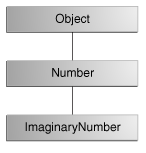Lesson: Classes and Objects
Section: More on Classes
The Java Tutorials have been written for JDK 8. Examples and practices described in this page don't take advantage of improvements introduced in later releases and might use technology no longer available.
See Dev.java for updated tutorials taking advantage of the latest releases.
See Java Language Changes for a summary of updated language features in Java SE 9 and subsequent releases.
See JDK Release Notes for information about new features, enhancements, and removed or deprecated options for all JDK releases.
Returning a Value from a Method
A method returns to the code that invoked it when it
- completes all the statements in the method,
- reaches a
returnstatement, or - throws an exception (covered later),
whichever occurs first.
You declare a method's return type in its method declaration. Within the body of the method, you use the return statement to return the value.
Any method declared void doesn't return a value. It does not need to contain a return statement, but it may do so. In such a case, a return statement can be used to branch out of a control flow block and exit the method and is simply used like this:
return;
If you try to return a value from a method that is declared void, you will get a compiler error.
Any method that is not declared void must contain a return statement with a corresponding return value, like this:
return returnValue;
The data type of the return value must match the method's declared return type; you can't return an integer value from a method declared to return a boolean.
The getArea() method in the Rectangle
Rectangle class that was discussed in the sections on objects returns an integer:
// a method for computing the area of the rectangle
public int getArea() {
return width * height;
}
This method returns the integer that the expression width*height evaluates to.
The getArea method returns a primitive type. A method can also return a reference type. For example, in a program to manipulate Bicycle objects, we might have a method like this:
public Bicycle seeWhosFastest(Bicycle myBike, Bicycle yourBike,
Environment env) {
Bicycle fastest;
// code to calculate which bike is
// faster, given each bike's gear
// and cadence and given the
// environment (terrain and wind)
return fastest;
}
Returning a Class or Interface
If this section confuses you, skip it and return to it after you have finished the lesson on interfaces and inheritance.
When a method uses a class name as its return type, such as whosFastest does, the class of the type of the returned object must be either a subclass of, or the exact class of, the return type. Suppose that you have a class hierarchy in which ImaginaryNumber is a subclass of java.lang.Number, which is in turn a subclass of Object, as illustrated in
the following figure.

The class hierarchy for ImaginaryNumber
Now suppose that you have a method declared to return a Number:
public Number returnANumber() {
...
}
The returnANumber method can return an ImaginaryNumber but not an Object. ImaginaryNumber is a Number because it's a subclass of Number. However, an Object is not necessarily a Number — it could be a String or another type.
You can override a method and define it to return a subclass of the original method, like this:
public ImaginaryNumber returnANumber() {
...
}
This technique, called covariant return type, means that the return type is allowed to vary in the same direction as the subclass.
Note: You also can use interface names as return types. In this case, the object returned must implement the specified interface.